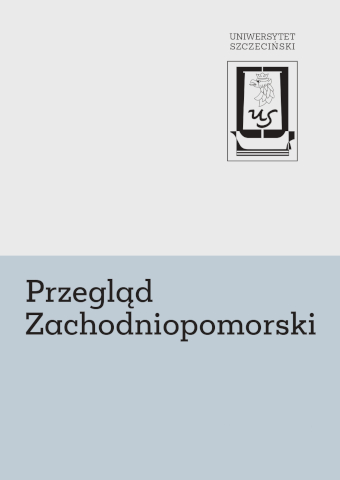| 1. | Borysowska, Agnieszka. „Powojenne losy szczecińskich księgozbiorów historycznych na przykładzie biblioteki Andreasa Müllera Greiffenhagiusa (1630−1694)”. W: Księgozbiory rozproszone. Losy księgozbiorów historycznych po II wojnie światowej, red. Aleksandra Siuciak, 83−94. Malbork: Muzeum Zamkowe, 2015. |
| 2. | Borysowska, Agnieszka, Michał Gierke. „Andreas Müller Greiffenhagius (1630−1694) – konterfekt uczonego orientalisty”. Rocznik Chojeński. Pismo historyczno społeczne 10 (2018): 93−132. |
| 3. | Gerhard, Stalla, Günter Mayer, Hermann Engel, oprac. Bayerische Staatsbibliothek Inkunabelkatalog. red. Elmar Hertrich. T. 1−7. Wiesbaden: Ludwig Reichert, 1988−2009. |
| 4. | Chlebus, Ewa. „Elementy przybyszowe w oprawach późnogotyckich”. Roczniki Biblioteczne 61 (2017): 67−84. |
| 5. | Copinger, Walter Arthur. Supplement to Hain’s Repertorium bibliographicum. P. 1. London: Henry Sotheran and Co., 1895. |
| 6. | „David Fabricius (9. März 1564 – 7. Mai 1617). Astronom, Kartograph, Astrologe und Wetterbeobachter”. Oll’ Mai – Schriftenreihe – herausgegeben von der Ostfriesischen Landschaft. T. 11. Aurich: Ostfriesische Landschaftliche Verlags- u nd Vertriebsgesellschaft mbH, 2017. |
| 7. | Duntze, Oliver, Falk Eisermann. „Fortschritt oder Fidibus? Zur Bestimmung, Bewahrung und Bedeutung von Inkunabelfragmenten”. W: Fragment und Makulatur. Überlieferungsstörungen und Forschungsbedarf bei Kulturgut in Archiven und Bibliotheken, red. Hans Peter Neuheuser und Wolfgang Schmitz, 281−307. Wiesbaden: Harrassowitz Verlag, 2015. |
| 8. | Estreicher, Karol. Bibliografia polska. Cz. III. T. 12−34. Kraków: Uniwersytet Jagielloński, 1891−2000. |
| 9. | Einbanddatenbank gefördert durch die Deutsche Forschungsgemeinschaft. Dostęp 7.05.2020. https://www.hist-einband.de. |
| 10. | Figaszewska, Karolina Kinga. „Fragmenty rękopisów średniowiecznych – stan badań i perspektywy badawcze. Średniowieczne fragmenty zachowane w Archiwum Państwowym w Szczecinie”. Studia Źródłoznawcze 57 (2019): 99−112. |
| 11. | Gesamtkatalog der Wiegendrucke. T. 1−11. Leipzig−Stuttgart: Hiersemann; Berlin: Akademie- Verlag, 1925−2008. |
| 12. | GW Manuskript. Dostęp 5.04.2020. https://www.gesamtkatalogderwiegendrucke.de. |
| 13. | Hain, Ludwig. Repertorium bibliographicum, in quo libri omnes ab arte typographica inventa usque ad annum MD typis expressi ordine alphabetico vel simpliciter |
| 14. | enumerantur vel adcuratius recensentur. T. 1−2. Stuttgartiae: J.G. Gotta, Lutetiae Parisiorum: J. Renouard, 1826−1838. |
| 15. | Incunabula Short Title Catalogue. The international database of 15th-century European printing. Dostęp 2.04.2020. https://data.cerl.org/istc. |
| 16. | Jahn, Willy. „Fabricius David”. W: Neue Deutsche Bibiographie, 731−732. T. 4. Berlin: Duncker & Humbolt, 1959. |
| 17. | Kawecka, Zofia. „Materiały do katalogu inkunabułów Biblioteki Głównej Uniwersytetu im. A. Mickiewicza”. Zeszyty Naukowe Uniwersytetu im. A. Mickiewicza. Biblioteka |
| 18. | Główna 1 (1960): 87−143. |
| 19. | Kawecka-Gryczowa, Alodia, Maria Bohonos, Eliza Szandorowska, oprac. Incunabula quae in bibliothecis Poloniae asservantur. T. 1: cz. 1−2. Wrocław−Warszawa−Kraków: Zakład Narodowy Imienia Ossolińskich, 1970. |
| 20. | Kawecka-Gryczowa, Alodia, Maria Bohonos, Eliza Szandorowska, Michał Spandowski, oprac., Incunabula quae in bibliothecis Poloniae asservantur. Addenda. Indices. |
| 21. | T. 2. Wrocław: Zakład Narodowy Imienia Ossolińskich, 1993. |
| 22. | Kowalewicz, Henryk. „Dodatki do katalogów inkunabułów i druków polskich XVI w. Biblioteki UAM w Poznaniu”. Zeszyty Naukowe Uniwersytetu im. Adama Mickiewicza w Poznaniu. Biblioteka 9 (1970): 164−220. |
| 23. | Löffler, Anette. „Die Berliner Inkunabelfragmente aus dem Historischen Staatsarchiv Königsberg”. Gutenberg-Jahrbuch 91 (2016): 131−140. |
| 24. | Majewski, Jan. „Opieka zdrowotna w średniowiecznym Brzegu”. Dolny Śląsk 13 (2008): 25−29. |
| 25. | Meltz, Carl. „Die Missaldrucke der Michaelisbrüder zu Rostock”. Gutenberg-Jahrbuch 32 (1957): 66−71. |
| 26. | Michalska, Agata. „Inkunabuły bibliotek Pomorza Zachodniego i ich powojenne losy”. W: Księgozbiory rozproszone. Losy księgozbiorów historycznych po II wojnie światowej, red. Aleksandra Siuciak, 129−138. Malbork: Muzeum Zamkowe, 2015. |
| 27. | Michalska, Agata. „Inkunabuły dawnej biblioteki gimnazjalnej w Szczecinie – próba odtworzenia zasobu”. Przegląd Zachodniopomorski 2 (2020): 119–141. |
| 28. | Michalska, Agata. „Inkunabuły Książnicy Pomorskiej w świetle ostatnich badań”. W: Książka dawna i jej właściciele, red. Dorota Sidorowicz-Mulak, Agnieszka Franczyk-Cegła, 215−225. T. 1. Wrocław: Zakład Narodowy im. Ossolińskich, 2017. |
| 29. | Michalska, Agata, Alicja Łojko. Katalog inkunabułów Książnicy Pomorskiej w Szczecinie. Szczecin: Książnica Szczecińska im. Stanisława Staszica, 2016. |
| 30. | Nachträge zu Hain’s Repertorium Bibliographicum und seine Fortsetzungen. Als Probe des Gesamtkatalogs des Wiegendrucke, red. Kommission für den Gesamtkatalog der Wiegendrucke. Leipzig: Haupt, 1910. |
| 31. | Szpilczyński, Stanisław. „Kultura medyczna na Dolnym Śląsku w przeszłości”. Śląski Kwartalnik Historyczny Sobótka 25 (1970), 3: 373−391. |
| 32. | Teitge, Hans-Erich. Der Buchdruck des 16. Jahrhunderts in Frankfurt an der Oder: Verzeichnis der Drucke. Berlin: Staatsbibliothek Preussischer Kulturbesitz, Wiesbaden: Reichert, 2000. |
| 33. | Verzeichnis der im deutschen Sprach-bereich erscheinenen Drucke des 16. Jahrhunderts. Dostęp 3.03.2020. https://www.vd16.de. |
| 34. | Wachter, Franz. wyd. „Sigismundi Rosiczii chronica”. W: Geschichtschreiber Schlesiens des XV. Jahrhunderts. Scriptores Rerum Silesiacarum, 31−86. T. 12. Breslau: Josef Max & Comp., 1883. |
| 35. | Wagner, Arkadiusz. „«Częścią dla ozdoby, częścią aby poznano czyia to księga iest». Refleksje po lekturze artykułu recenzyjnego Marii Cubrzyńskiej-Leonarczyk”. Z Badań nad Książką i Księgozbiorami Historycznymi 13 (2019): 361−380. |
| 36. | Wellner, Alex. „Der Goslarer Rektor Gottfried Grosch, ein Landsmann und Freund Johann Gottfried Schnabels”. Schnabeliana. Jahrbuch der Johann-Gottfried Schnabel-Gesselschaft 9 (2006−2008): 37−56. |
| 37. | Wydra, Wiesław. Katalog inkunabułów Biblioteki Uniwersyteckiej w Poznaniu. Poznań: Biblioteka Uniwersytecka, 2002. |







